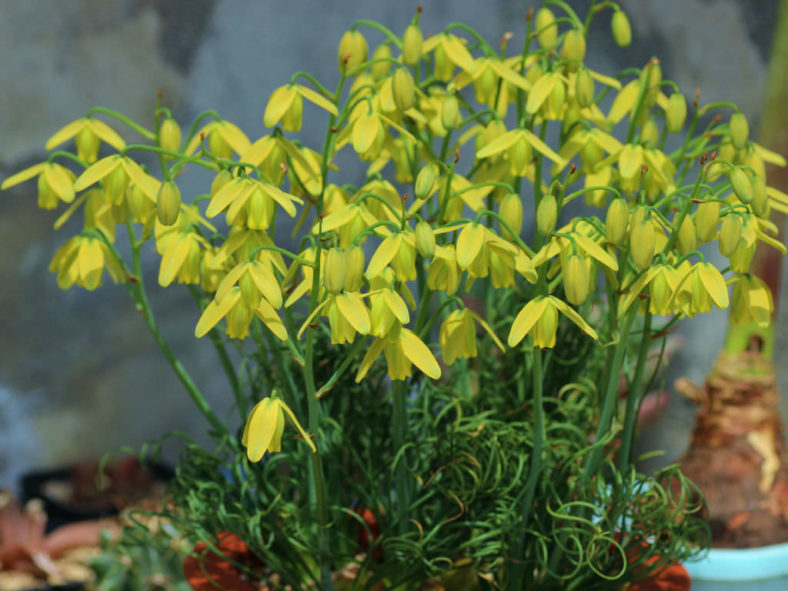Albucas are eye-catching bulbous plants native to northern Africa and the Arabian Peninsula. These plants have similar, simple, and elegant flowers but are highly variable in foliage. The leaves and flowers are covered in downy hairs that emit a pleasant scent when touched.
Albuca was first discovered in the 1800s, and today there are 150 recognized species. Not all of these are in cultivation. Most have white, green, or yellow flowers that are either drooping or erect, with three petals.
In their native habitat, Albucas bloom in late winter to early spring. Growing Albuca usually starts with seeds or bulbs. Seeds can take three years to produce flowers.
Albucas are perennials, but they should be treated as annuals or dug up and overwintered indoors in cold regions. The biggest problems when growing Albucas are rotten bulbs due to excess moisture and frost damage.

Growing Conditions and General Care
Albucas require sandy, loose soil and full to partial sun to produce their characteristic blooms. The plants can grow 3 to 4 feet (0.9 to 1.2 m) tall, with a slightly narrower width. Good cultivation encourages removing the bulb from outdoors in zones with frost. They are not frost-hardy, and cold temperatures can damage the bulb.
These plants look particularly attractive in rock gardens, on slopes, and even in containers. The biggest requirement for Albuca care is superior drainage. The regions to which they are native are not known for consistent moisture, which means they are drought-tolerant once established. Constant watering at planting is necessary to mimic the rainy season, but after that, light watering is sufficient for caring for Albuca.
Fertilize the plants annually at installation and in early spring with a balanced all-purpose bulb food. Cut back spent foliage after it yellows and begins to wilt.
Propagation
The best way to propagate Albucas is from offsets that are divided away from the parent plant and then planted separately. Unfortunately, not all Albucas produce offsets, so you may need seeds to get more of these exciting plants.
Fresh seeds generally germinate a week after sowing. They should be sown while the parent plant is actively resprouting. It needs to be planted fairly quickly, as seeds have a viability period of only about six months. Once planted, keep seedlings moderately moist in medium light and a warm area. In about three years, you can look forward to another plant that may be different from the parent plant, as these seeds tend to hybridize readily.
Source: gardeningknowhow.com
Links
- Back to genus Albuca
- Succupedia: Browse succulents by Scientific Name, Common Name, Genus, Family, USDA Hardiness Zone, Origin, or cacti by Genus